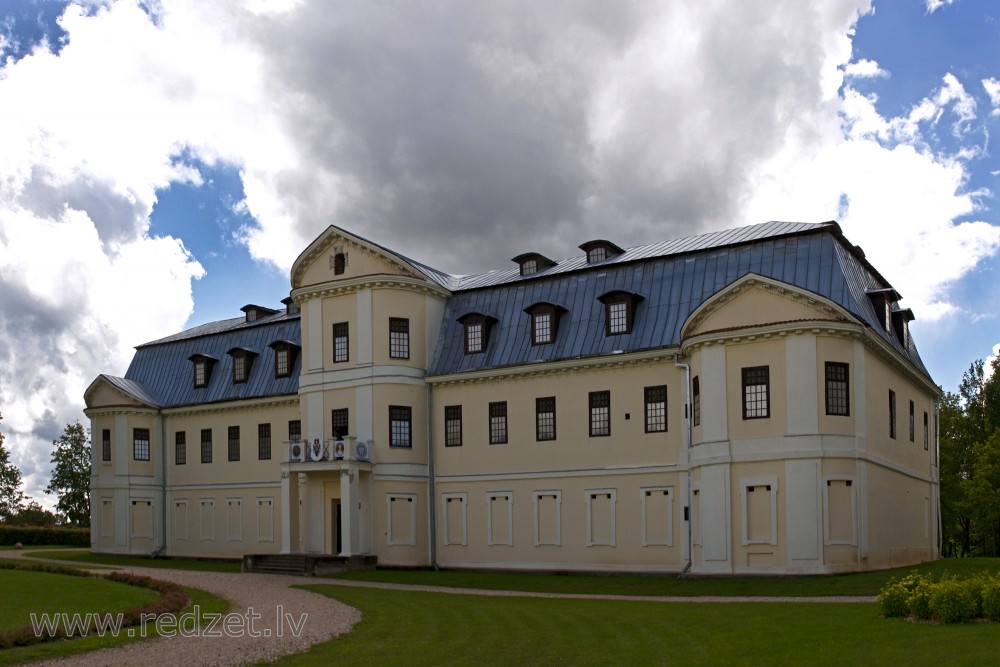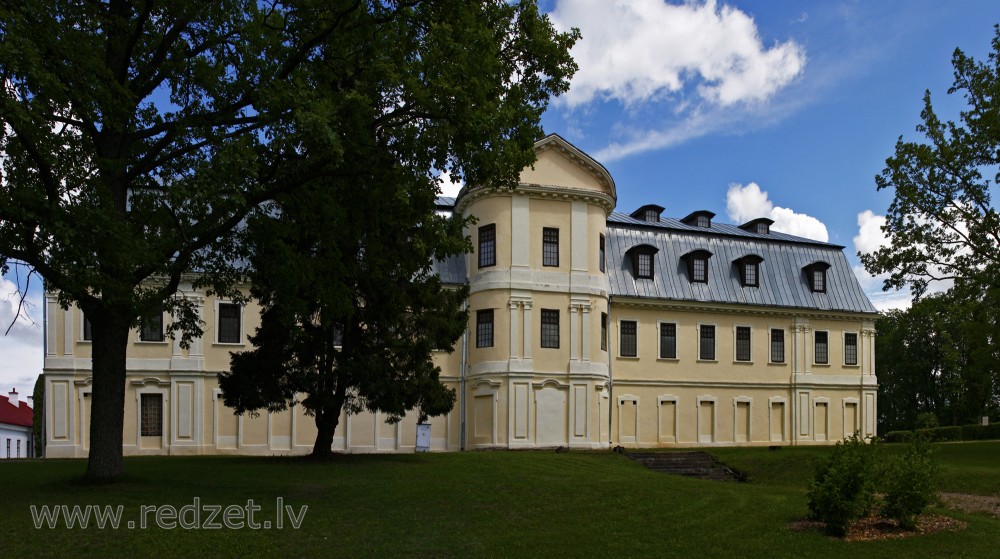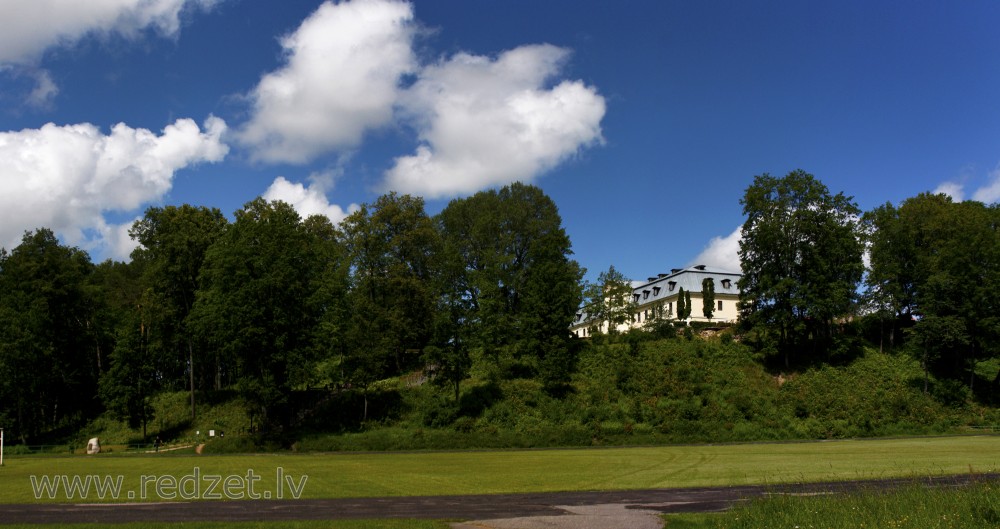Krāslava town, Latvia
Krāslava (Latgalian: Kruoslova, German: Kreslau, Belarusian: Краслаўка, Polish: Krasław, Russian: Краслава) is a town and the administrative centre of Krāslava Municipality, in the Latgale region of Latvia. The town lies on the Daugava, upstream and to the east of the city of Daugavpils.
| Krāslava | |
| town | |
| Country | Latvia |
| Municipality | Krāslava Municipality |
| Town rights | 1923 |
| Area | 8.6 km2 (3.3 sq mi) |
| Population (2015) | |
| • Total | 8,300 |
| • Density | 965/km2 (2,500/sq mi) |
| Postal code | LV-560(1–3) |
| Calling code | +371 656 |
History
- Krāslava was an important hillfort on the waterway from the Varangians to the Byzantine Empire since early Middle Ages, part of the orthodox Principality of Jersika in the 13th century.
- In 1558 was mentioned for the first time in written sources of Livonian Order as Kreslau (in German).
- In 1676 the church was built by Jesuit Order and Krāslava became the most northern located center of the Jesuit movement on the border with the areas dominated by Protestant and Orthodox churches.
- In 1729 Count Ludvig Plater bought Krāslava. For nearly two centuries the Plater family determined Kraslava economical and cultural life.
- Craftmen from Poland and Germany in co-operation with local people organized the production of carpets, velvet, silk and cotton material, weapons, jewellery and other goods. The goods were in demand at the four Kraslava fairs and also exported to Courland, Poland and Germany.
- Between 1757 and 1842 Krāslava was home for a Roman Catholic seminary, one of the first educational institutions in Latgale region.










